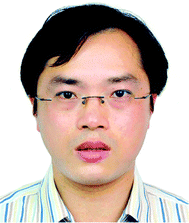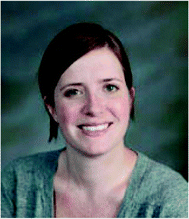Polymer self-assembly: a web themed issue
Feihe
Huang
a,
Rachel
O'Reilly
b and
Steven C.
Zimmerman
c
aState Key Laboratory of Chemical Engineering, Department of Chemistry, Zhejiang University, Hangzhou 310027, P. R. China. E-mail: fhuang@zju.edu.cn
bDepartment of Chemistry, University of Warwick, Gibbet Hill Road, Coventry, UK. E-mail: Rachel.OReilly@warwick.ac.uk
cDepartment of Chemistry, University of Illinois at Urbana-Champaign, 600 South Mathews Avenue, Urbana, Illinois 61801, USA. E-mail: sczimmer@illinois.edu
Polymer self-assembly, which uses non-covalent interactions to direct the self-assembly of monounits, has become a topic of increasing interest in recent years. The individual building blocks, designed to fabricate the polymeric architectures, include not only macromolecules such as polypeptides and DNA, but also a variety of synthetic monomeric species, including macrocycles, dendrimers, and organic–inorganic compounds. In addition, polyrotaxanes, a class of supramolecular threaded macromolecules, represent another type of self-assembling polystructure. The crucial driving force for self-assembly is based on multiple intermolecular interactions such as hydrogen bonding, π–π stacking, metal–ligand coordination, hydrophobic interactions and host–guest interactions. The reversible and tunable nature of such noncovalent interactions endows these supramolecular assemblies with the important properties of reversibility and stimuli-responsiveness. In turn, this allows for relatively large physical or chemical changes in response to a weak stimulating signal in the environment (e.g., pH, temperature, light, redox agents, enzymes, ions, gases, mechanical force, electric and magnetic fields). These features can imbue these materials with some fascinating functionalities such as recycling and self-healing, and, in turn, allow their use in a range of applications such as adaptive materials and devices.
Based on polymer self-assembly, many interesting one-, two- and three-dimensional morphologies, such as spherical micelles, cylinders, rods and vesicles, have been constructed. New research interests are nowadays focused on the morphological transition from one state to another and the relationship between structure and morphology, and their subsequent application in the fields of bioimaging, drug delivery, sensing and electronics.
The articles included in this web themed issue provide a glimpse into the scope of the field and represent the high-level work going on today. Despite the wealth of current research, there is no doubt that new discussions and excitement will be explored in the coming years. We hope that the readers of the themed issue will enjoy the excellent work of the contributors and find their own exciting perspectives from these articles as we have done.
| This journal is © The Royal Society of Chemistry 2014 |



